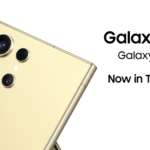The Evolution of Text-to-Song AI: Transforming Words into Melodies
In recent years, the advancement of artificial intelligence (AI) has brought significant transformations across various industries, from healthcare to finance. Among these innovations, one fascinating area that has captured public imagination is the development of text-to-song AI. This technology is poised to revolutionize the music industry by converting written text into melodious songs, blending natural language processing (NLP) with music generation. This article delves into the current state of text-to-song AI, its underlying technology, applications, and the potential impact on the future of music creation.
The Underlying Technology
At its core, text-to-song AI leverages sophisticated algorithms that combine natural language processing and deep learning techniques to generate music. Here’s a breakdown of the process:
-
Natural Language Processing (NLP): The AI system begins by analyzing the input text to understand its semantic content, emotional tone, and structure. This involves tasks such as sentiment analysis, theme extraction, and syntactic parsing.
-
Melody Generation: Based on the analyzed text, the AI then generates a melody that aligns with the emotional tone and rhythm of the text. This is typically achieved using generative models like Generative Adversarial Networks (GANs) or Recurrent Neural Networks (RNNs), which are trained on vast datasets of music and lyrics.
-
Harmonization and Instrumentation: After generating the melody, the AI adds harmonies and selects appropriate instruments to enhance the musical piece. This step ensures that the final song is rich and musically coherent.
-
Singing Synthesis: Finally, the AI converts the text into sung lyrics using voice synthesis technology. This involves models like WaveNet or Tacotron, which are capable of producing human-like singing voices.
Applications of Text-to-Song AI
The potential applications of text-to-song AI are diverse and far-reaching:
-
Personalized Music Creation: Individuals can create personalized songs for special occasions such as birthdays, weddings, or anniversaries by simply providing the AI with a text description of their sentiments.
-
Creative Assistance for Musicians: Professional musicians and songwriters can use text-to-song AI as a tool for inspiration, generating melodies and harmonies based on their lyrical ideas, thereby enhancing their creative process.
-
Education and Therapy: This technology can be used in educational settings to create engaging musical content for students. Additionally, it holds potential in music therapy, where customized songs can be created to support emotional and psychological healing.
-
Entertainment and Media: The entertainment industry can leverage text-to-song AI to create original soundtracks for movies, TV shows, and video games, or even to generate theme songs for characters or narratives.
Challenges and Ethical Considerations
Despite its promising potential, text-to-song AI also faces several challenges:
-
Quality and Authenticity: Ensuring that the AI-generated music matches the quality and emotional depth of human-created music is a significant challenge. AI systems must be trained on diverse and high-quality datasets to achieve this.
-
Intellectual Property: The use of AI in music creation raises questions about intellectual property rights. Determining the ownership of AI-generated songs and protecting the rights of human creators are critical issues that need to be addressed.
-
Ethical Use: There is a need for guidelines to ensure that text-to-song AI is used ethically and does not perpetuate biases or produce inappropriate content.
The Future of Music Creation
The evolution of text-to-song AI is an exciting frontier in the realm of artificial intelligence and music. As technology continues to advance, it is likely to become an integral part of the music creation process, offering new possibilities for both amateur and professional musicians. The seamless integration of AI in music could democratize music creation, making it accessible to a broader audience and fostering a new era of creativity.
In conclusion, text-to-song AI represents a groundbreaking fusion of language and music, promising to transform the way we create and experience songs. While challenges remain, the potential benefits of this technology are immense, heralding a future where anyone can bring their words to life through the power of AI-generated music.
The future of AI holds immense potential across various domains. Here are some key areas where AI is expected to make significant advancements:
-
Healthcare: AI will continue to revolutionize healthcare with advancements in medical imaging, predictive analytics, and personalized medicine. AI-driven diagnostic tools can provide faster and more accurate diagnoses, while machine learning models can help predict patient outcomes and tailor treatments to individual needs.
-
Autonomous Systems: Self-driving cars, drones, and robotic systems will become more sophisticated and widely adopted. Advances in AI algorithms, sensor technology, and data processing will enable these systems to operate more safely and efficiently in complex environments.
-
Natural Language Processing (NLP): AI-driven language models will become more adept at understanding and generating human language. This will enhance applications such as virtual assistants, language translation, and sentiment analysis, making interactions with technology more intuitive and seamless.
-
AI Ethics and Governance: As AI becomes more pervasive, ethical considerations and governance frameworks will gain prominence. Ensuring AI systems are fair, transparent, and accountable will be crucial to addressing biases, privacy concerns, and the societal impacts of AI.
-
AI in Business: AI will continue to transform business operations through automation, data analytics, and decision support systems. AI-driven insights will enable businesses to optimize processes, enhance customer experiences, and drive innovation.
-
Creative AI: AI will increasingly contribute to creative fields such as art, music, and literature. AI algorithms can generate new artistic works, assist in the creative process, and provide novel tools for artists and creators.
-
Education and Learning: AI will play a significant role in personalized learning experiences, adaptive learning platforms, and intelligent tutoring systems. AI-driven educational tools can tailor content to individual learning styles and pace, enhancing educational outcomes.
-
Environment and Sustainability: AI can aid in addressing environmental challenges by optimizing resource use, monitoring ecosystems, and predicting climate change impacts. AI-driven solutions can contribute to sustainable practices and help mitigate environmental issues.
-
Human-AI Collaboration: The future will see more integrated collaboration between humans and AI systems. AI will augment human capabilities, assisting in complex tasks and decision-making processes, leading to more effective and efficient outcomes.
-
Quantum Computing and AI: The convergence of AI and quantum computing holds promise for solving complex problems that are currently intractable. Quantum-enhanced AI algorithms could revolutionize fields such as cryptography, material science, and drug discovery.
The future of AI is exciting and full of possibilities, with ongoing research and development pushing the boundaries of what AI can achieve. However, it is essential to address ethical, societal, and regulatory challenges to ensure that AI benefits humanity as a whole.




